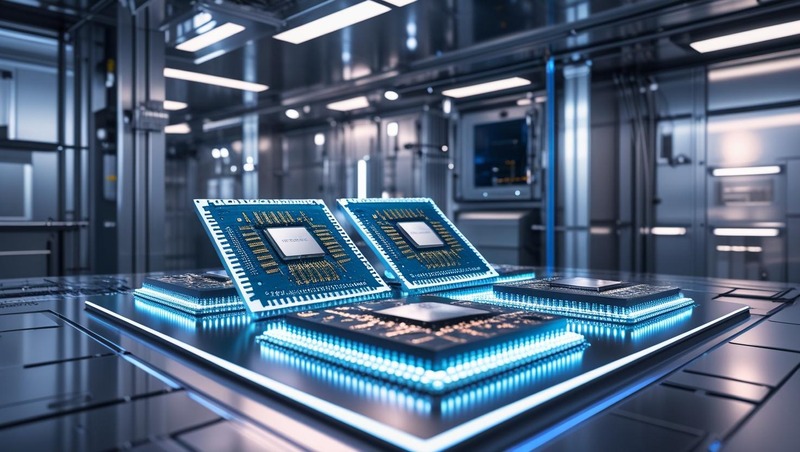The next-generation memory market is undergoing a transformative phase, marked by significant technological advancements and equally complex challenges. As industries move beyond the limitations of traditional memory technologies like DRAM and NAND flash, next-generation solutions such as MRAM, ReRAM, 3D XPoint, and Phase-Change Memory (PCM) are being developed to meet the rising demands of modern computing. However, despite their potential to revolutionize data storage and processing, these memory technologies face several technological hurdles that must be addressed to enable widespread adoption.
One of the most pressing challenges is the complexity of integration with existing system architectures. Most next-generation memory types require changes at both the hardware and software levels, including adjustments to system firmware, operating systems, and application layers. This can slow adoption as manufacturers and developers must reengineer their platforms to accommodate new memory interfaces and protocols, often at considerable cost and risk.
Download PDF Brochure @ https://www.marketsandmarkets.com/pdfdownloadNew.asp?id=632

Another significant hurdle is scalability and manufacturing maturity. Technologies like MRAM and ReRAM are still in relatively early stages of mass production, and scaling them for high-volume applications remains difficult. Fabricating these memory types with high yield and consistency at nanoscale dimensions presents technical barriers, including issues related to lithography, thermal stability, and material compatibility with CMOS processes. These factors contribute to higher costs, limiting the economic feasibility of next-generation memory for mainstream use.
Endurance and data retention also present technological challenges. While many next-generation memory types promise higher endurance compared to NAND flash, they often fall short of the long-term reliability offered by DRAM or SRAM. Ensuring that these new memories can sustain billions of read/write cycles without degradation, while maintaining data integrity over extended periods, is a critical area of research and development.
Despite these obstacles, the opportunities in the next-generation memory market are immense. One major advantage is the potential to break the “memory wall”—the bottleneck between memory speed and processor speed—by enabling faster, more energy-efficient data access. These innovations could lead to significant performance boosts in AI, edge computing, and real-time analytics applications, where latency and speed are paramount.
There is also a strong push toward the development of “universal memory” that combines the benefits of all existing memory types: the speed of SRAM, the density of DRAM, and the non-volatility of flash. While this remains an aspirational goal, breakthroughs in materials science and device engineering are bringing the industry closer to realizing such a memory solution.
Moreover, the rise of emerging computing paradigms like neuromorphic computing and quantum computing opens up entirely new application areas for next-generation memory. These technologies demand memory solutions that are not only fast and energy-efficient but also capable of mimicking synaptic behavior or maintaining qubit coherence, respectively.
In summary, the next-generation memory market is characterized by a delicate balance between technological challenges and promising opportunities. Overcoming the current limitations will require continued innovation in materials, architecture, and system integration. However, with the growing demand for faster, more reliable, and energy-efficient data storage solutions, the rewards for success are substantial. As research and investment continue to grow, the next-generation memory market is well-positioned to become a foundational pillar of future computing infrastructure.
Frequently Asked Questions (FAQ) on Next-Generation Memory Market
What is the total CAGR expected to be recorded for the next-generation memory market size during 2023-2028?
The global next-generation memory market is expected to record the CAGR of 23.2% from 2023-2028.
Which regions are expected to pose significant demand for next-generation memory market share from 2023-2028?
North America, and Asia Pacific is expected to pose significant demand from 2023 to 2028. Major economies such as US, Canada, China, Japan, and South Korea are expected to have a high potential for the future growth of the market.
What are the major market opportunities in the next-generation memory market share?
Increasing adoption of next-generation memory technologies in embedded systems and IoT devices, and rising adoption of high-bandwidth memory (HBM) in data centers for memory-intensive applications are projected to create lucrative opportunities for the players operating in the next-generation memory market during the forecast period.
Which are the significant players operating in next-generation memory market?
Key players operating in the next-generation memory market are SAMSUNG (South Korea), SK Hynix Inc (South Korea), Micron Technology, Inc. (US), KIOXIA Holdings Corporation (Japan), and Fujitsu (Japan).
What are the major applications of the next-generation memory market?
Consumer electronics, enterprise storage, automotive and transportation, telecommunications, industrial, automotive, military and aerospace, agriculture, retail, and healthcare are the major applications of the next-generation memory market.